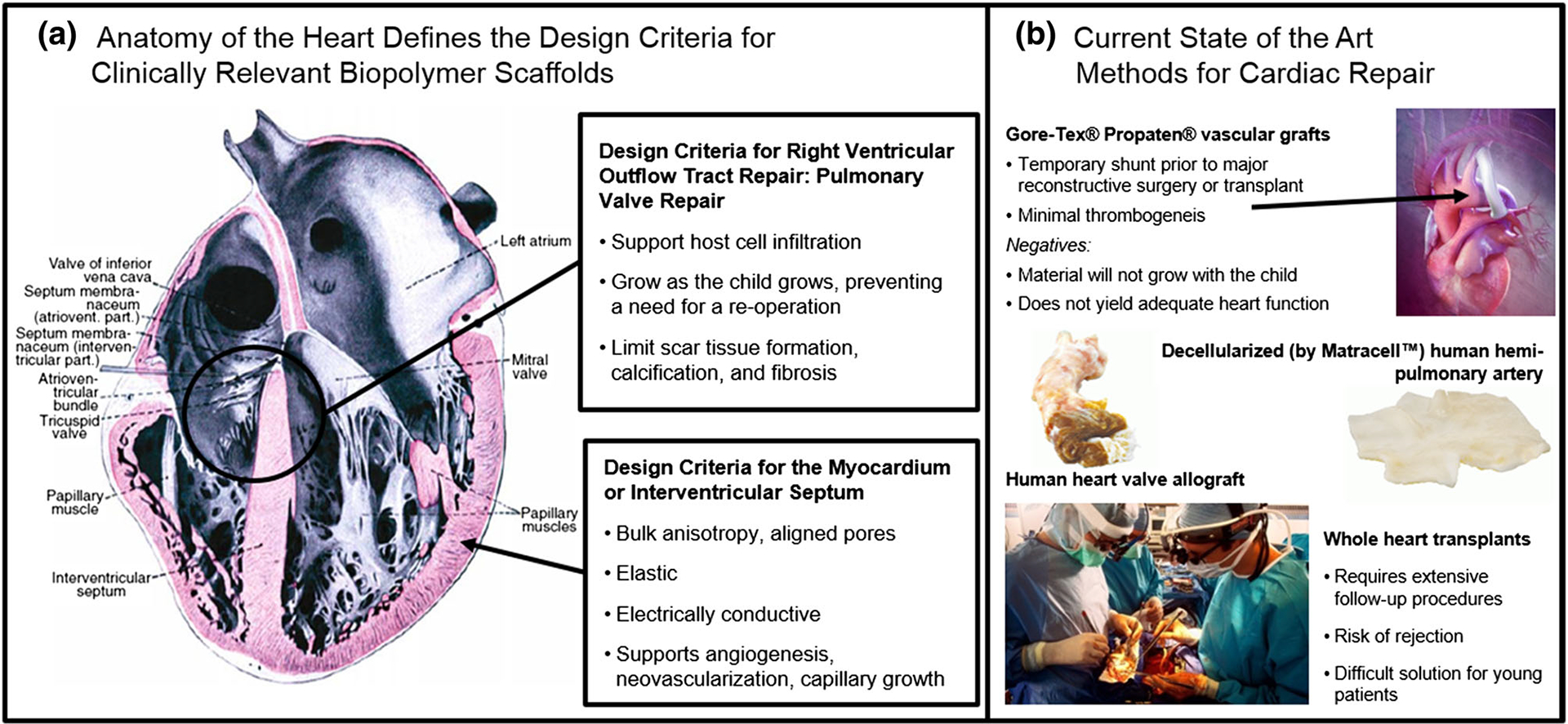FIGURE 3.

Cardiac tissue replacement. (a) Anatomy of the heart showing the striated alignment of cardiac muscle. Design criteria for cardiac tissue engineering include high elasticity, aligned porosity, support of vascular and capillary network growth, and methods for integration into the host tissue both mechanically and electrically. (b) A variety of materials are commercially available for temporary repair of cardiac defects, but most are made from non-degradable plastics, which do not grow with the patient or integrate with the tissue, leading to the risk of fatal arrhythmias. Some disadvantages of clinically available vascularized grafts or decellularized matrices are thrombosis or a lack of tissue integration and growth within the patient. Decellularized grafts represent an allogenic approach to repairing damaged tissue, but patients run the risk of rejection, infection, and fibrosis.
